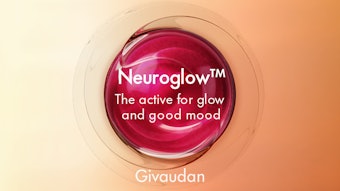It has been extensively reported that particles of submicron dimensions can penetrate the stratum corneum (SC);1-4 however, this remains a controversial area and was recently refuted in the case of solid nanoparticles, e.g. zinc oxide.5 In vivo studies by Lademan et al.6 also demonstrated that particles having dimensions of greater than 40 nm fail to penetrate the intact SC through cellular or paracellular pathways, and only appear to penetrate via a follicular route.7 Yet other contradictory work warrants the further investigation8 of particles < 100 nm into the SC; for instance, ex vivo skin studies have shown that rigid metallic nanoparticles of < 10 nm can penetrate the SC.9 In addition, elastic phospholipid vesicles of approximately 100 nm have been shown in vivo to penetrate the SC, to a greater extent than nonelastic vesicles of similar dimensions.10 This suggests a role for elastic nanostructures with dimensions on the order of 10 nm.
Therefore, based upon the structure of naturally occurring high-density lipoproteins (HDL), nanoparticles of reduced size and controlled dimensions were developeda to topically deliver oil-soluble cosmeceuticals and active agents into the stratum corneum (SC). These particles range from 10 to 40 nm, much smaller than standard carriers such as liposomes (50 to > 1,000 nm).
Lab Practical: Formulating with the Environmentally Responsive Nanoparticles
- The described nanoparticles, with the chosen active principle, can be formed in the aqueous phase of the cosmetic production process; further temperature rises should not be allowed to exceed 60°C.
- After formation, the nanoparticle solution is insensitive to pH modification and high speed stir, although homogenization should be avoided.
- Once formed, the nanoparticles are compatible with most conventional cosmetic ingredients and excipients, although hydroalcoholic bases should be avoided.
- Ingredients that are lipophillic in nature, such as steroidal compounds, are best adapted for incorporation into and delivery by the nanoparticles. Other examples of particularly well-suited active agents include: vitamins (A, D and E), lipophilic botanical extracts, hydrophobicized peptides and anti-fungals.
- For optimal dermal penetration of the nanoparticles, the final formulation should be in the form of a gel or solution.










